The Marian altar of Naumburg Cathedral unfolds its effect in the marble hall of Klosterneuburg Abbey near Vienna
After the Marian altar of Naumburg Cathedral was on display for five and a half months in the Diocesan Museum in Paderborn, it was presented to the public yesterday in the Marble Hall of Klosterneuburg Abbey.
"I am fascinated by the effect of the altar in the impressive space; it holds its own excellently in the Imperial Marble Hall, while at the same time blending in with the Baroque décor of the room," says the director of the United Cathedral Foundations, Dr. Holger Kunde. "I am immensely grateful to the custodian of the art collections of the abbey's museum, Wolfgang Christian Huber, for his commitment to exhibiting the altar in Klosterneuburg. Nevertheless, it is also evident here that the altar was created for the west choir of Naumburg Cathedral and is to return there after the exhibition tour," Dr. Kunde continued.
"Although the exhibition of contemporary sacred art has been an integral part of the museum's work at Klosterneuburg Abbey for many years, the Marian Altar project was a special challenge for us - due to the technical difficulties and the high artistic rank of the work," says Custos Huber.
Because of the location, the construction of the Marian altar in the Marble Hall involved detailed planning and implementation, which the restorer of the United Cathedral Foundations, Hannah Stahl, mastered brilliantly with helpers on site.
Until December 2023, the Marian altar in the monastery will be open to the public.
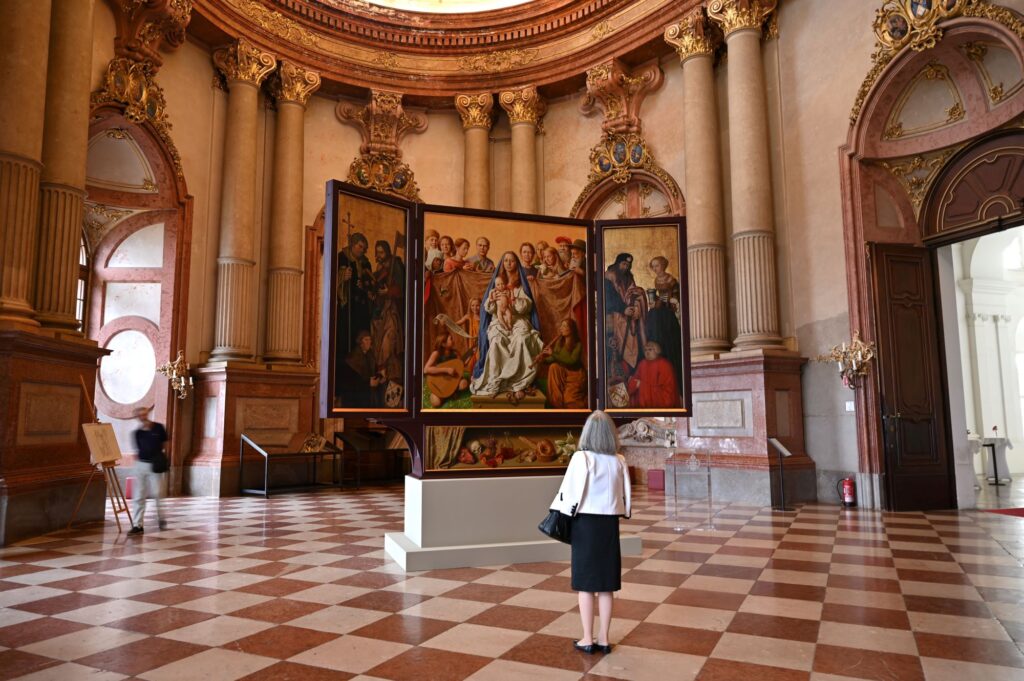
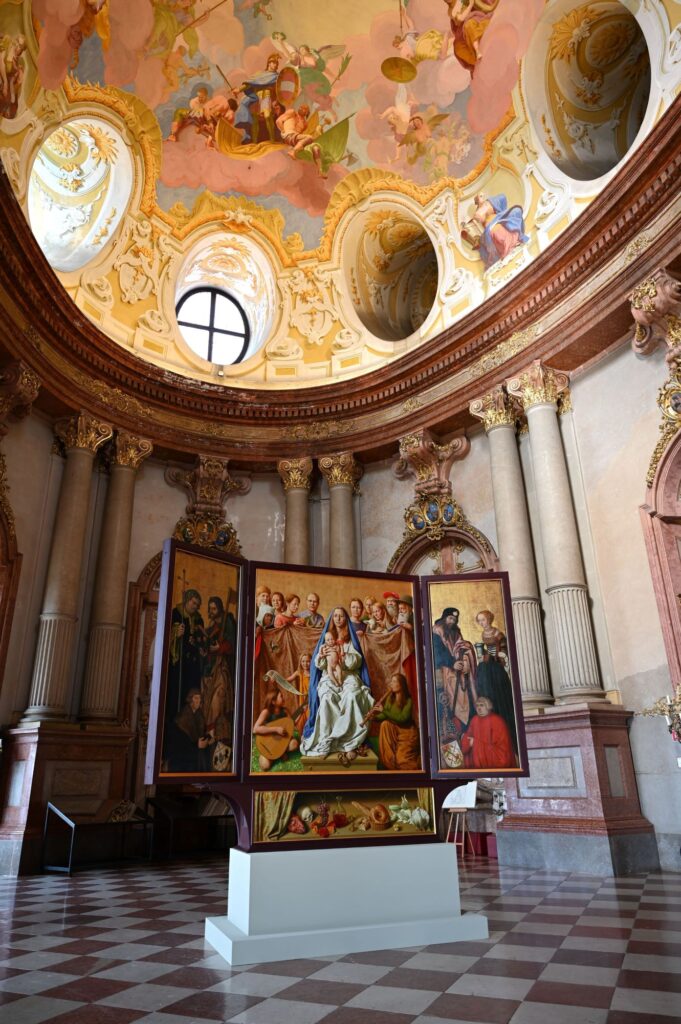
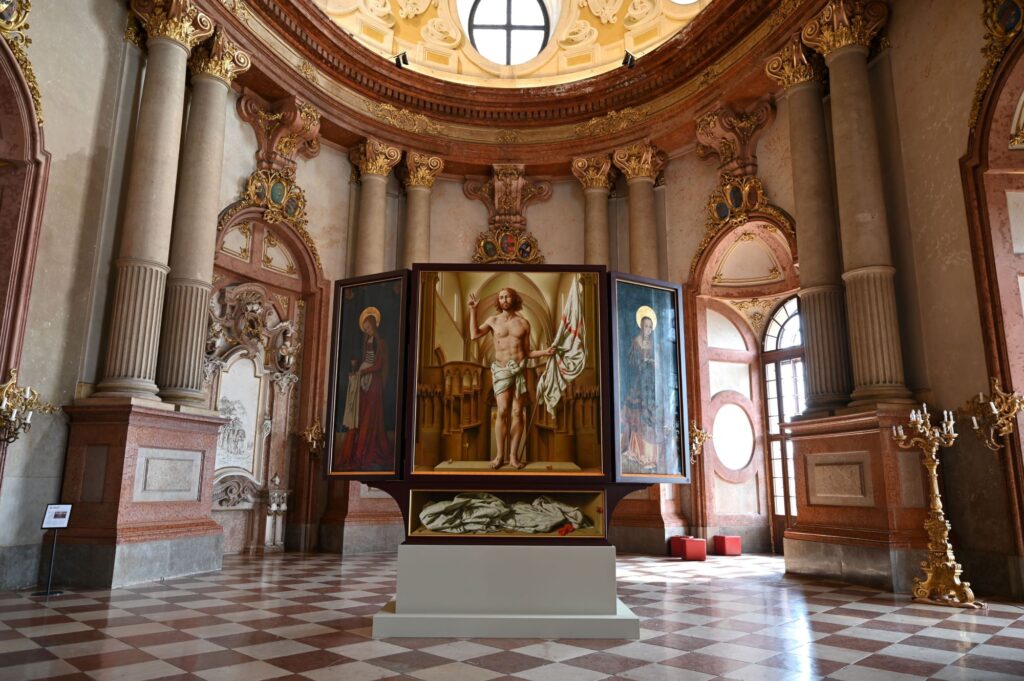
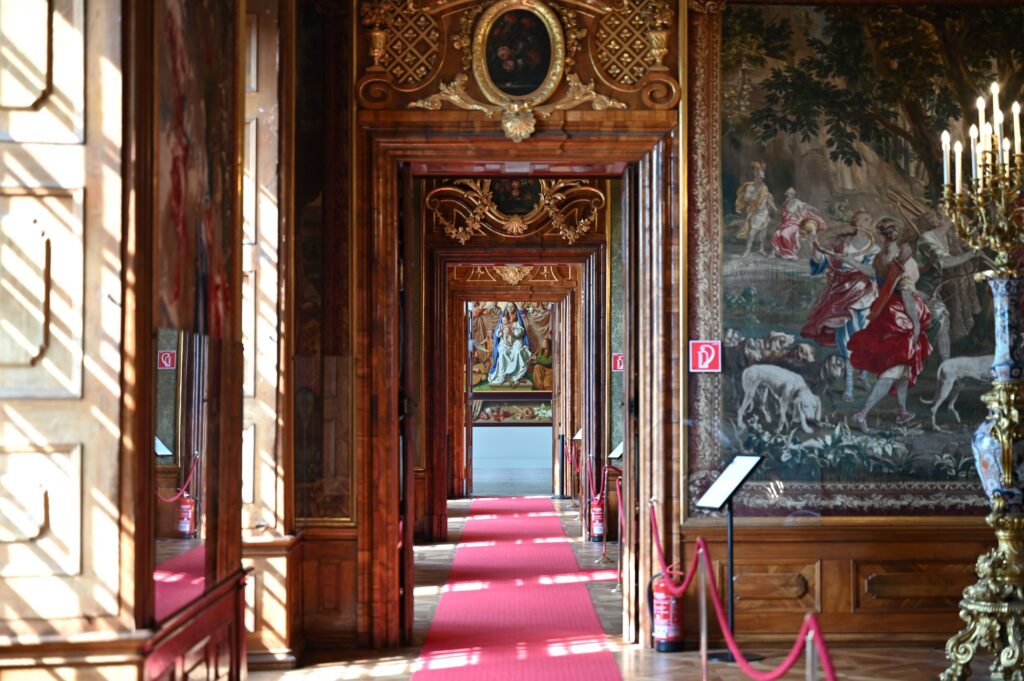
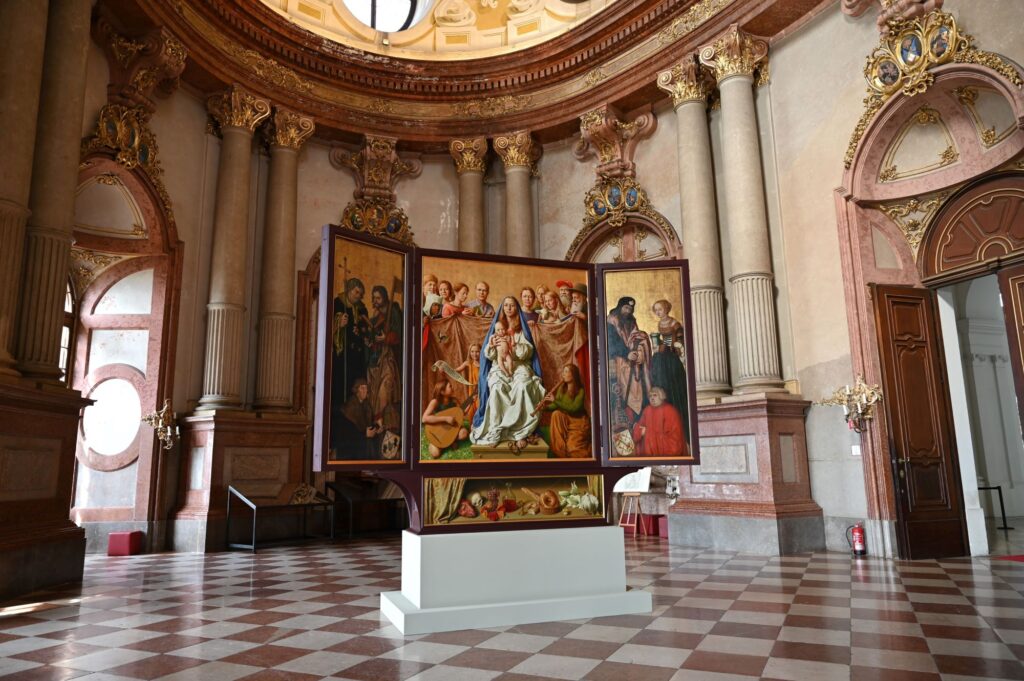
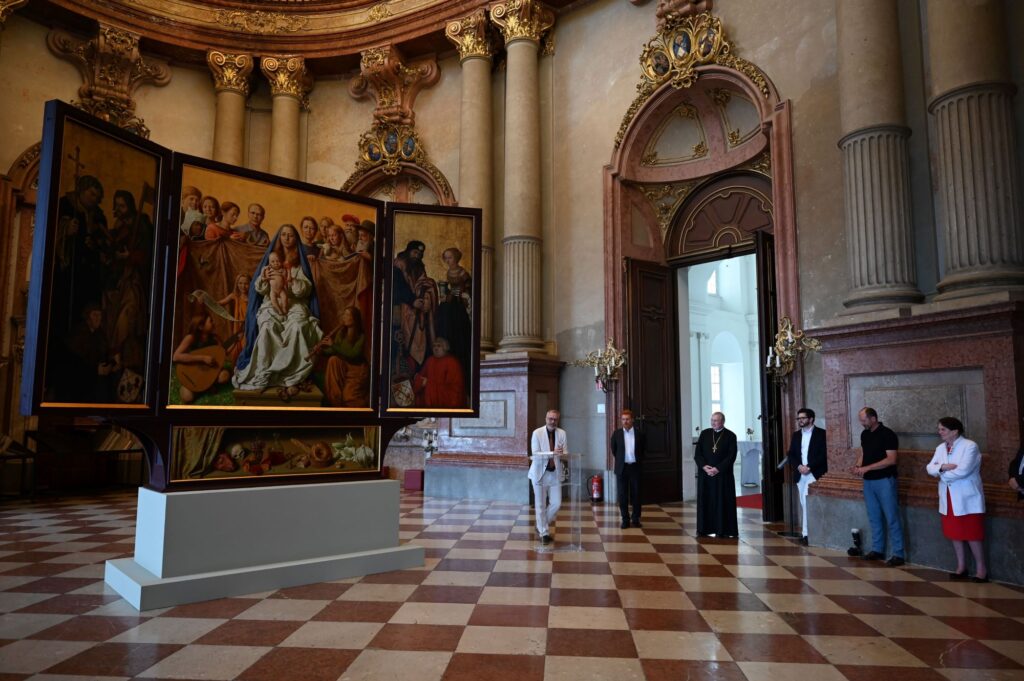
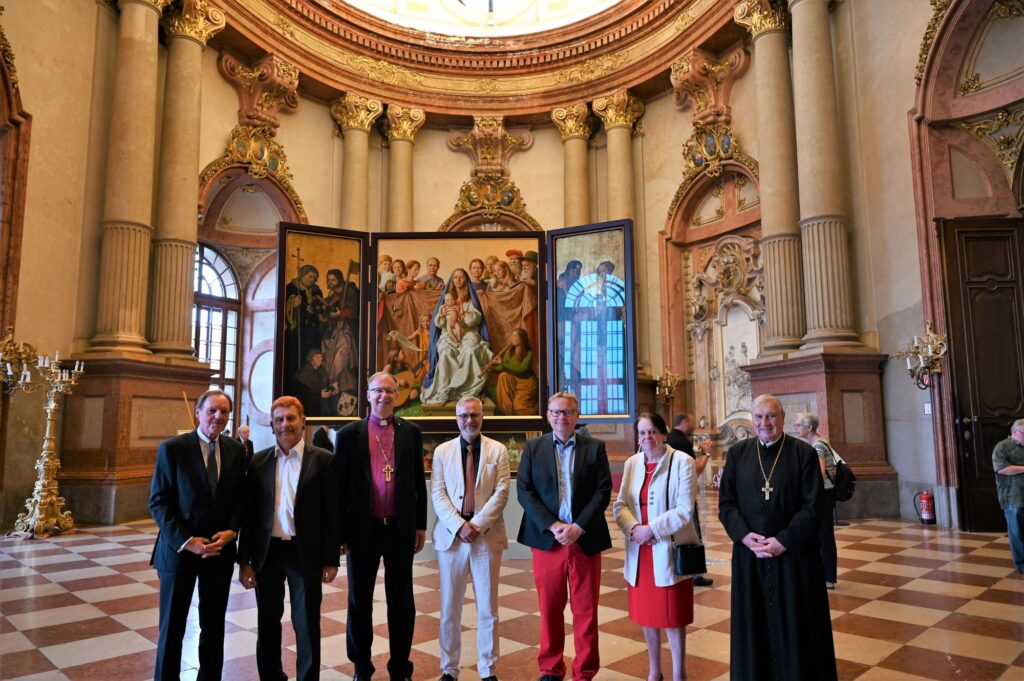
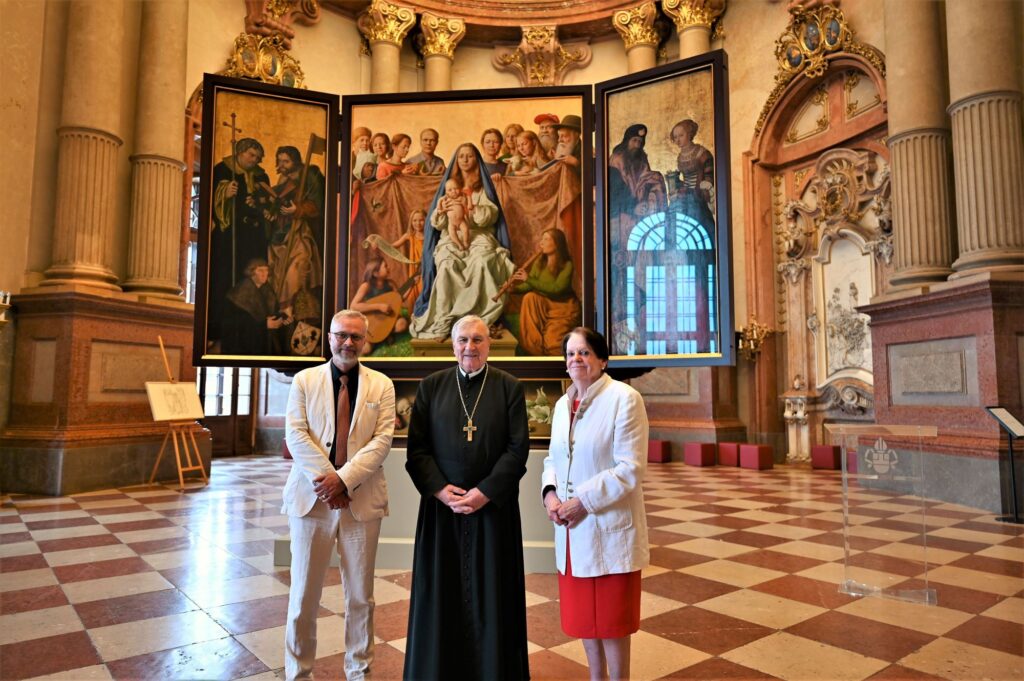
Last year, the Cranach-Triegel retable on the altar of Mary in the west choir, which was consecrated at the beginning of July 2022, complemented the spiritual image of Naumburg Cathedral for five months. On December 5, 2022, it was dismantled to be displayed in other locations as part of a temporary journey. The first stop was Paderborn from December 16, 2022 to June 12, 2023, when more than 10,000 visitors came to the Diocesan Museum to admire the altar. The second stop on the altar's journey is now Klosterneuburg Abbey until December. During the period of the exhibition journey, the United Cathedral Foundations want to continue constructive discussions with all parties involved about the fate of the altar in Naumburg Cathedral.
Background Information
The "Triegel meets Cranach" project
The project, initiated in its initial stages since October 2019 by the United Cathedral Founders and supported in terms of content by the Protestant parish of Naumburg and lively support from the bishops of the Protestant Church of Central Germany and the Catholic diocese of Magdeburg, aimed to increase the spiritual appeal of Naumburg Cathedral and provide an important impetus for ecumenism. The altar retable created in 1519 by Lucas Cranach the Elder for the altar of Mary in the west choir was robbed of its central section depicting Mary as a result of a deliberate iconoclasm. The two side wings were preserved.
A new central panel and two predellae were created by the Leipzig artist Michael Triegel in order to place the reredos liturgically at the service of the Annunciation once again and to set a sign for overcoming the division of the church that arose in the 16th century.
The re-erection of the retable on July 3, 2022 is currently one of the most intensively discussed projects in the field of monument preservation and contemporary art. After all, the project touches on central issues in dealing with cultural heritage as well as the constantly changing needs and demands of the present. The topic takes on particular significance due to the World Heritage status of Naumburg Cathedral, which was achieved in 2018 and which, in the opinion of ICOMOS, the advisory body of UNESCO, would be endangered by the installation of the retable.
What is the relationship between requirements motivated by monument preservation and the ecclesiastical dedication of sacred spaces and the liturgical uses to be derived from them? To what extent can a mobile and reversible piece of equipment such as a reredos actually endanger the world heritage status, even more so if it was created for the sacred space of the west choir?
These and other questions were raised at a scientific colloquium on November 24, 2022, against the background of the future fate of the Naumburg Marian Altar. Renowned experts from science, monument preservation, church and culture came together to discuss the topic "Ecclesiastical use and monument preservation - a contradiction?
The altar retable by Lucas Cranach the Elder.
Lucas Cranach the Elder (1427-1553) was one of the most important German painters of the Renaissance. In 1519, he completed a three-winged altar retable for the altar of the Naumburg west choir, dedicated to the Virgin Mary since its creation in the mid-13th century.
The central part of the retable, with a depiction of the Mother of God Mary with Child, was destroyed in 1541 in the course of the controversy in the Reformation period. In this way the west choir lost its patroness.
The large-format side wings of the retable with the portrait-like depiction of the two founder bishops John III of Schönburg (1492-1517) and Philip of Wittelsbach (1518-1542) and various saints have survived the centuries and were exhibited in the cathedral treasure vault of Naumburg Cathedral since 2006. They testify to the exceptional quality of the work. Especially the depictions of Mary Magdalene and James the Elder stand out due to their fine execution. The saints depicted on the inner and outer sides of the wings - Barbara, Catherine, Philip, James the Elder, James the Younger and Mary Magdalene - were previously dedicated to side altars in the west choir, which were demolished at the beginning of the 16th century. In this way, the reredos continues the liturgical tradition of Naumburg's west choir, which can be grasped since the 13th century.
The new central panel and the predella by Michael Triegel
After more than 500 years, Cranach's two original wings were supplemented by a central section created by Leipzig artist Michael Triegel, as well as a predella.
The front of the new central panel depicts a "Sacra Conversazione", i.e. Mary surrounded by saints. Centrally, Mary presents the newborn Savior. The personalities depicted can be interpreted both as saints venerated in the Naumburg west choir or as present-day people. The group is supplemented by the Protestant theologian Dietrich Bonhoeffer. The persons make clear to the viewer that the event of salvation always has its own personal reference, which requires the commitment of the individual.
On the reverse side of the central panel the risen Christ can be seen. He is depicted in the midst of the architecture of Naumburg's west choir and in this way makes clear that the completion of salvation history will not take place in an indefinable space distant in time and space, but is also possible concretely and directly in this place. The predella with front and back refers back to the symbolism of the Last Supper and the Passion, respectively.
The artist Michael Triegel
Michael Triegel was born in Erfurt in 1968 and studied painting at the Leipzig Academy of Visual Arts under Arno Rink and Ulrich Hachulla from 1990 to 1997. Triegel gained international fame in 2010 when he was commissioned to paint a portrait of Pope Benedict XVI. Prior to that, he had already completed a number of ecclesiastical commissions, including two large-scale altarpieces for the churches in Grave and Ebern and a ceiling painting for the Würzburg Cathedral Music. This was followed in 2011 by the third altarpiece for the church of St. Augustine in Dettelbach and in 2015 by the design of two stained glass windows for the parish church of St. Mary in Köthen. In 2017, his devotional picture "Merciful Jesus" was inaugurated in the church of St. Peter and Paul in Würzburg. In 2018, the high altarpiece "Incarnation" followed for the church of St. Oswald in Baunach.
Major personal exhibitions of Triegel's work were most recently on view in Leipzig ("Logos und Bild," 2017), Erfurt ("Discordia concors," 2018/19), and Rostock ("Cur Deus," 2020).
The Abbey of Klosterneuburg
Historical overview
A few years after moving their residence to Klosterneuburg, the Babenberg Margrave Leopold III and his wife Agnes founded the monastery in the immediate vicinity of their castle in 1114 as the religious, social and cultural center of their country. In 1133 they handed over this monastery to the Augustinian canons.
The founding legend
A gust of wind snatched Agnes' bridal veil. The search remained fruitless, whereupon Leopold III made a vow to build a monastery where the veil was found. Nine years later Leopold found the veil on an elder bush and fulfilled his promise. Although this is a later legend, the veil actually exists in the treasury of the monastery, which has been open to visitors since May 2011.
In 1136 the collegiate church was consecrated, and a few months later, on November 15, 1136, Leopold III died and was buried in a small tomb under the present Leopoldi Chapel, which very quickly became a place of pilgrimage. In 1181, the goldsmith Nicholas from the city of Verdun completed a pulpit covering made of enamel panels that tell the story of salvation based on events from the Old and New Testaments. After the devastating abbey fire of 1330, these enamel panels were transformed into the "Verdun Altar", one of the most important works of art of the European Middle Ages. In the meantime, around 1200, Klosterneuburg had become a residence again for a few years: Babenberger Leopold VI had a new palace built on today's monastery grounds with a magnificent chapel, the "capella speciosa", the first Gothic building in Austria. Only sparse remains of both buildings exist today.
In the Middle Ages, the monastery had become an important scientific and theological research center, as evidenced not least by the more than 1200 manuscripts in the monastery library. The canonization of the founder of the monastery, Leopold III, in 1485 then made clear the importance of the monastery in the ecclesiastical landscape of Austria, which was only interrupted by the Reformation period, when only a few canons lived in the monastery, who were close to the Reformation in many respects. At the same time, the choir nunnery, which had been established parallel to the canons' monastery, became extinct.
With the Catholic Counter-Reformation, the monastery quickly regained its former importance and, through the endowment of the Austrian archducal hat as the "holy crown of the land" in 1616, became the guardian of this insignia, which could only be removed from the tomb of St. Leopold for "hereditary homage". A few years later, baroqueization began inside the Romanesque collegiate basilica, which was interrupted by the Turkish War of 1683: The Turkish army besieging Vienna also included Klosterneuburg, where the defense had been organized by a canon and a lay brother. The successful defense of Klosterneuburg made possible the relief of Vienna by imperial troops in September 1683.
In 1730, the Habsburg Emperor Charles VI decided to build a monastery residence in Klosterneuburg based on the model of the Spanish Escorial. The plan envisaged a huge complex with nine domes and four courtyards. During the construction work, the emperor died suddenly in 1740. His daughter and successor, Maria Theresa, wanted - in keeping with the spirit of the times - to expand Schönbrunn Palace along French lines, and the monastery was happy not to have to bear the enormous construction costs any longer: The work was stopped immediately, just one eighth of the planning had been realized. It was not until 100 years later that at least one courtyard, the imperial courtyard, was completed and thus a quarter of the plan was executed.
The reign of Emperor Joseph II marked the beginning of a period of upheaval: the imperial ecclesiastical policy brought about a significant expansion of parish pastoral care and social commitment, the revolution of 1848 put an end to landlordism and thus demanded a reorganization of the monastery's economy. The end of the Habsburg monarchy in 1918 meant new changes and the following years with their economic, social and political tensions, conflicts and catastrophes again burdened the monastery.
But it was precisely in the 1920s that an ecclesiastical reform movement was set in motion by the Abbey of Klosterneuburg through the ideas of the canon Pius Parsch, which had a worldwide impact and received confirmation in the documents of the Second Vatican Council: through a return to the texts of the Bible and new forms of liturgy - such as the use of the respective national language and a popular altar - the position of the faithful was moved to a new level.
With the annexation of Austria to the National Socialist German Reich in 1938, the new rulers immediately began taking measures against the monastery as a national Austrian symbol and Christian institution: confiscation of premises, expropriation of leased land, and finally, in 1941, dissolution of the monastery. The monastery buildings with all collections fell to the Kunsthistorisches Museum, everything else was divided among various institutions. In April 1945, the re-establishment of the monastery was one of the first acts of the new government, and Klosterneuburg Abbey subsequently became one of the most important factors in the church's reconstruction.
Klosterneuburg Abbey today
The canons of Klosterneuburg Abbey - currently about 45 - come from Austria, Germany, the USA, Poland, Norway, Vietnam and Romania. They begin their life in the monastery with the dressing ceremony, during which they receive their religious name. This is followed by the one-year novitiate, then the "simple profession", which binds the future canon to the convent for three years, and finally the "perpetual profession", which binds him to the convent for life and requires of him permanent obedience, poverty and chastity. The convent is democratically organized - according to the regulations of the Austrian Augustinian Canons' Congregation - with an elected provost and a canon dean, also elected by the canons, at the head. They are assisted by a chapter council of elected members and members appointed by the provost.
Cultural and touristic importance
Today, Klosterneuburg Abbey, the residence of Margrave Leopold III, is one of the most important destinations for cultural tourism in Lower Austria: the world-famous Verdun Altar is one of the absolute highlights and the rich collections of the Abbey Museum and Treasury combine works of art from the Middle Ages to the present day. The complex of buildings from the Romanesque period through the splendor of the Baroque to Historicism is unique, as is the Baroque building site of the Sala terrena, which is unique in the world and has remained unchanged since construction work ceased in 1740. Changing exhibitions of modern art, such as the Gallery of Modern Art and the St. Leopold Peace Prize, round off this range of offerings. The biennial orchid exhibitions - the largest of their kind in Austria - in the monastery's convent garden have become a real crowd puller.

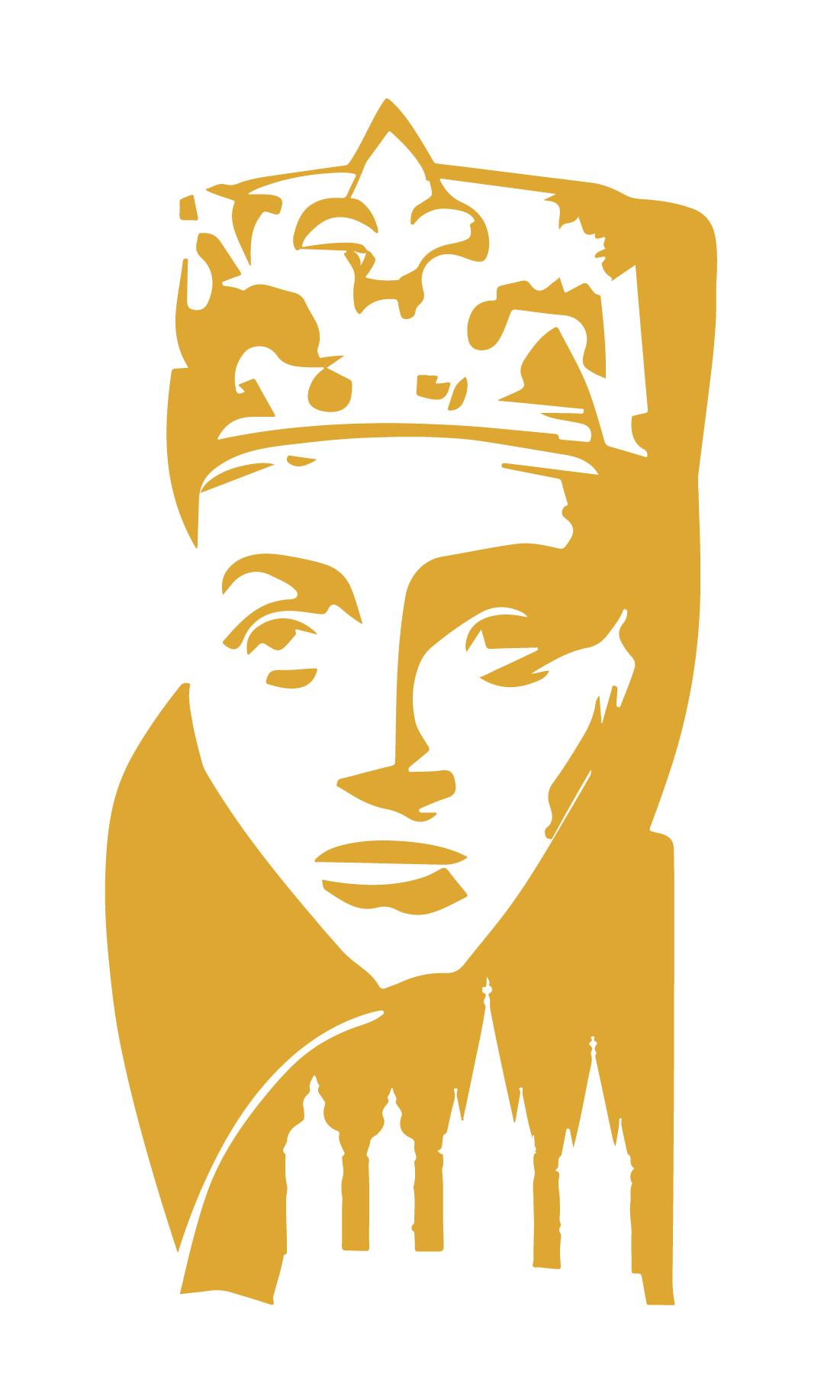
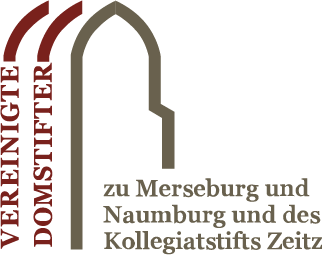
 Skip to content
Skip to content